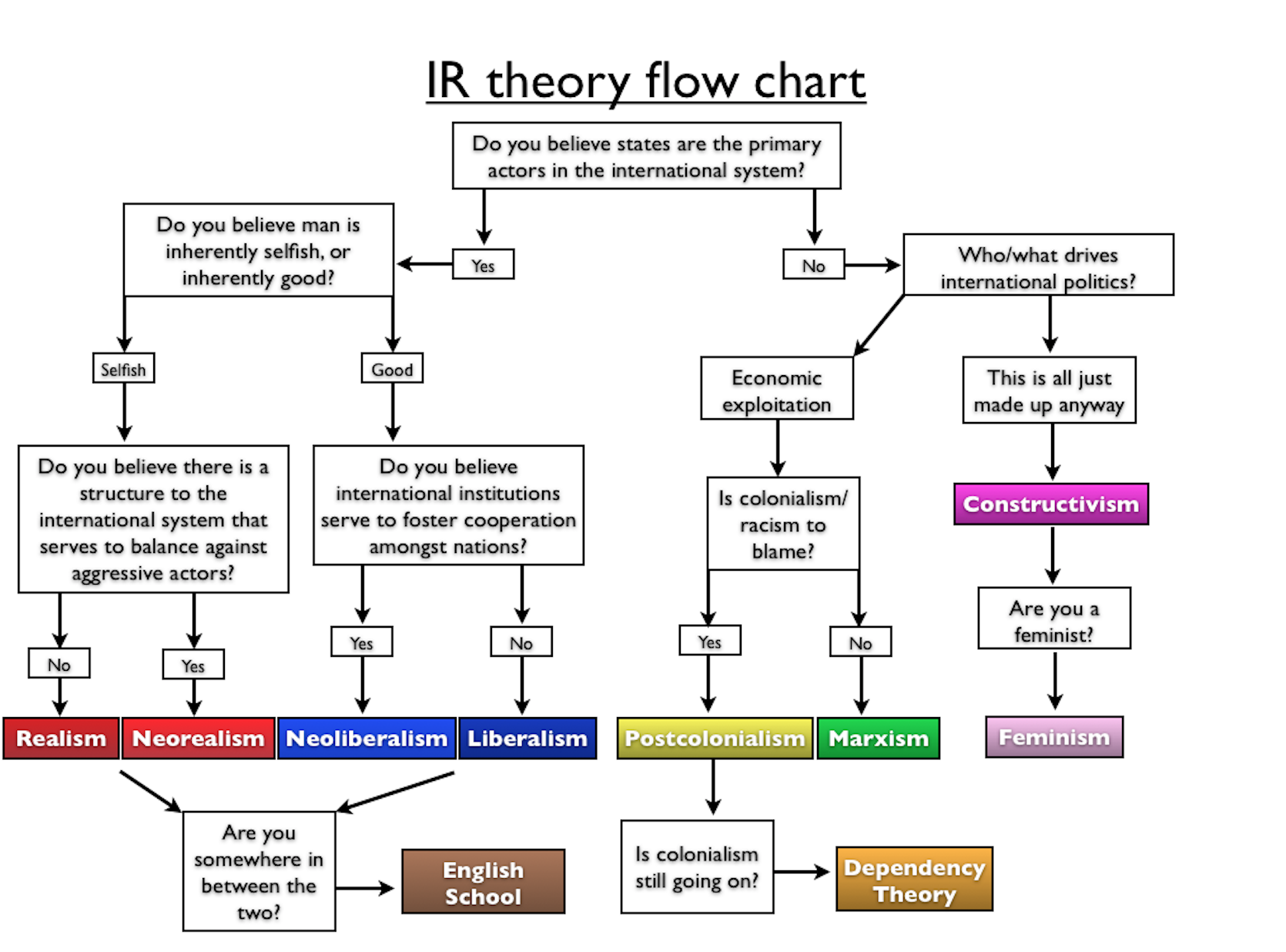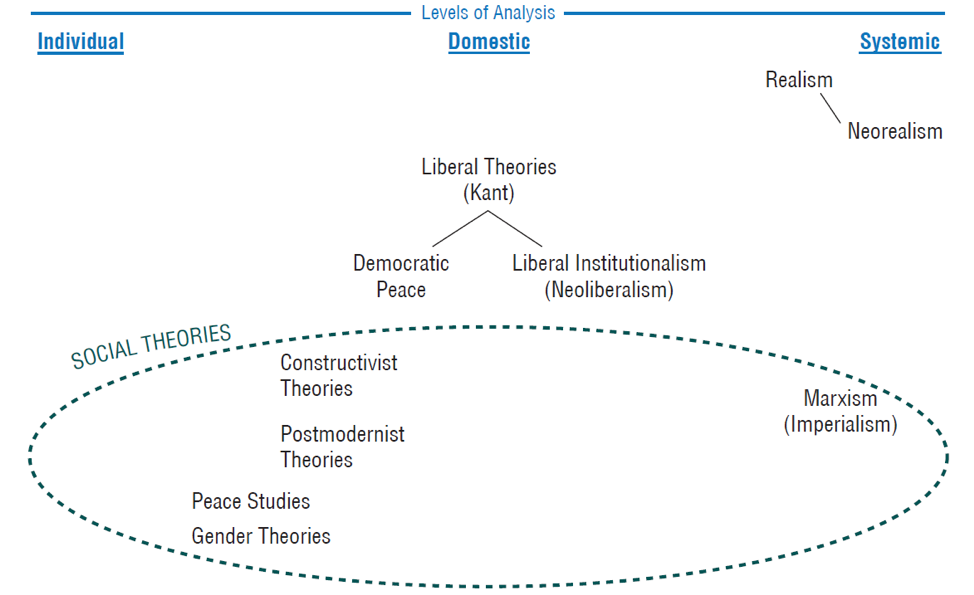Chapter 2 Introduction to IR and IR theories

2.1 Intro. to IR
IR concerns the relationships among the world’s governments. Events in recent years reflect the ever-growing interconnections of the world.
-Refugees from Libya and Syria
-Economic recession of 2008-2009
-Pandemic2.2 Globalization
What is globalization? https://www.youtube.com/watch?v=wLNp3kgBuuQ
Positive:
1. Global trade networks;
2. Global connectivity allows instant access to friends, family, and news;
3. Improvements to communication and transportationNegative:
1. Trade war;
2. State’s vulnerability (sanctions);
3. Pandemic2.3 Collective goods problem
How can a group, in this case two or more countries, serve its collective interests when doing so requires its members to forgo their individual interest? Examples: stopping global warming; military alliances
Collective goods problem: How to provide something that benefits all members of a group regardless of what each member contributes to it. The problem of shared interests versus conflicting interests among members of a group is also referred to as the problem of “collective action”, free riding, burden sharing, or the tragedy of the commons.
Easier to provide collective goods in small groups than in large ones. It occurs in all groups and societies but is particularly acute in international affairs because each nation is sovereign. In domestic societies, the problem is solved by taxes.
Dominance: establishing a power hierarchy in which those at the top control those below; In IR, a hegemon or superpower stands atop the great powers as the dominant nation; Advantages: forces members of a group to contribute to the common good; minimizes open conflict within the group; Disadvantages: constant oppression of the lower-ranking members in the status hierarchy; conflicts over position in hierarchy harm stability, well-being
Reciprocity: rewards behavior that contributes to the group and punishes behavior that pursues self-interest at the cost of the group Issue: enforced without central authority Disadvantage: lead to tit-for-tat escalations of conflict Forms the basis of most of the norms (habits, expectations) and institutions in the international system.
Identity: does not rely on self-interest Members of community care enough about others in the community to sacrifice their own interests for the benefits of others In IR, identity communities play important roles in overcoming difficult collective goods problems; nonstate actors also rely on identity politics
2.3.1 Nuclear proliferation
What is nuclear proliferation? https://www.youtube.com/watch?v=wLNp3kgBuuQ
Solutions:
1. Legitimizes nuclear weapons’ ownership by “big five” most powerful countries (dominance)
2. Nuclear powers’ obligation to disarm in exchange for smaller countries staying nonnuclear (reciprocity)
3. National identities that make bombs undesirable (identity)
4. IAEA: International Atomic Energy Agency (International Cooperation)2.4 IR theories
2.4.1 Actors
International system: set of relationships based on rules and patterns of interactions; defines who is a member, members’ rights and responsibilities, and actions and responses. Principal actors in IR are the world’s governments
States: State: territorial entity controlled by a government and inhabited by a population; exercises sovereignty over its territory
Non-state actors: IGO’s, NGO’s, MNC’s, others
2.4.2 Levels of analysis
Individual; domestic; systemic/interstate
2.4.3 Realism
• Realism is a broad intellectual tradition that explains international relations mainly in terms of power
– Realism’s foundation is the principle of dominance
2.4.4 Idealism
• Idealism emphasizes international law, morality, and international organizations as key influences on international events
2.4.5 Neorealism
• Neorealism (structural realism) is a 1980s adaptation of realism
• Explains patterns of international events in terms of the system structure (the international distribution of power) rather than the internal makeup of individual states
• Liberal theories of IR try to explain how peace and cooperation are possible
• Liberal Institutionalism Ability of states to develop and follow mutually advantageous rules
2.4.7 Constructivism
• Constructivism: asks how states construct their interest through their interactions with one another
• An approach rather than a theory Explanations draw heavily on the identity principle
2.4.8 Marxism
• Marxism, a theory that holds that the more powerful classes oppress and exploit the less powerful by denying them their fair share of the surplus they create
2.4.9 Lenin’s theory of imperialism
• Applied Marx’s ideas to international system
• Globalization of class relations
• Wealthy and poor countries

2.5 Political methodology
Quantitative vs. quanlitative
Historical vs. scientific
Statistics and formal model
2.5.1 Scientific approach
Research question
Literature review
Theorizing
Hypotheses
Research design
Data analysis
Results and conclusion
2.4.6 Social theories
• Social theories, rely on social interaction to explain individuals’ and states’ preferences